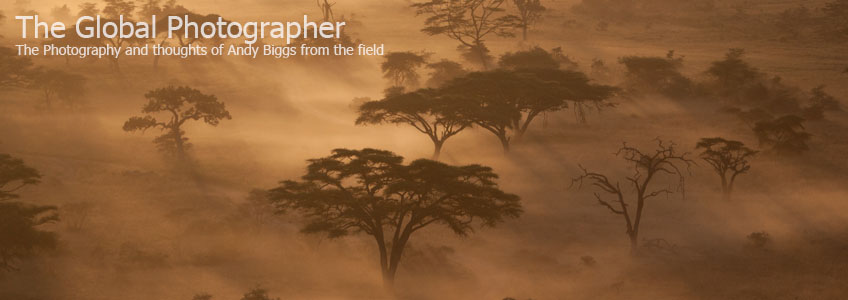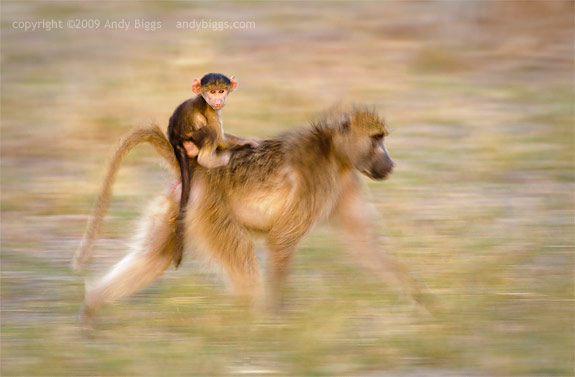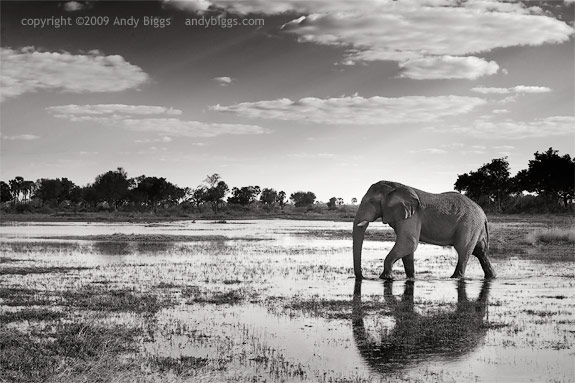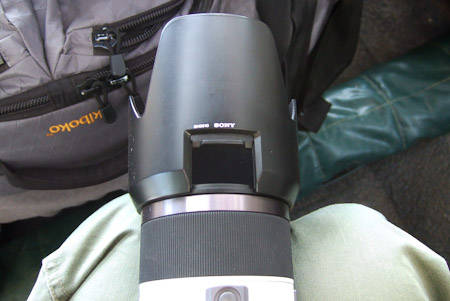As promised, I have a short safari trip report from my latest trip to Botswana.
Itinerary
We visited 3 different camps: Kwetsani, Savuti and Chitabe, plus 3 additonal nights at Mombo as an optional extension. These camps were a mixture between a wet camp (Kwetsani), wet/dry camps in the Okavango at Mombo and Chitabe, and also a camp outside of the delta at Savuti.
Camera Gear
There was an even mix of Canon and Nikon equipment. Canon bodies varied from 40D's, 50D's to 1-series bodies, while the Nikons ranged from a D90 to mostly D700's and D3's. The lenses were all over the board. We had a few Canon 500mm lenses, numerous Canon 100-400mm and 70-200mm lenses, and on the Nikon side the most popular lens was the 200-400mm f/4. Here is what I took:
Nikon D3, D3x and D300 camera bodies.
Nikon 24-70mm, 70-200mm f/2.8 VR and 200-400mm f/4 VR lenses. 1.4x II teleconverter.
There were many different approaches for stabilizing one's camera equipment, and I will be writing up a separate post just on this topic. I used many different methods, and I have much to say on the topic. I was able to try out multiple solutions from multiple vendors, and the most interesting product from Novoflex, called their QuadroPod, made quite an impression on me.

My D3 + 200-400mm + 1.4x on a 4th Generation Designs Mongoose 3.5a, supported by the new Novoflex QuadroPod kit.
Who Came on the Trip
All photographers who joined the safari were non professionals. For the first time ever, the trip was 100% men. I typically have a few married couples on each of my safaris, the rest are men and women who are traveling without their significant other or spouse. The conversations at time were, well, a bit different than normal. Our head guide was the man himself, Grant Atkinson, who accompanied us throughout the entire safari. He is the most amazing guide, as well as photographer.

Grant Atkinson, our head guide
The Safari
Kwetsani was the first camp on the itinerary, and here we met up with our specialist guide, Grant Atkinson. Grant works for Wilderness Safaris, and is one of the best guides and photographers! Kwetsani is primarily a water camp at this time of year, and as such was intended to give us a chance to photograph the Okavango Delta’s more aquatic habitats. We had helicopter flights each day and we also went out in aluminium boats in search of up-close kingfishers and jacanas. We made use of mekoro (dugout canoes) to photograph trees, islands and papyrus, and one group had a great elephant sighting from the canoes. On game drives we photographed a very good looking male lion that was on the floodplains at sunrise. We spent twenty minutes with him, and everyone got great shots. The lion really turned it on for us by crossing water right in front of us. You can see one of my photos of him here.
We also managed to photograph a leopard for a few minutes, and banded mongooses on foot (that is us who was on foot!). The leopard that we saw jumped right across the road in front of us, which would have made for an incredible image. The problem was that all 3 of us in the vehicle were setup for longer lenses and just didn't get our shorter lenses out quickly enough to make the shot. This is a funny story, which I will illustrate in a future blog posting.

Lion walking on the floodplains, Kwetsani Camp, Botswana. July 2009
Nikon D3, 200-400mm f/4 VR, 1/200 @ f/5.6, ISO 3200
At Savuti we had the rare fortune of being able to visit an active wild dog den in the area. These den visits are limited to one vehicle from the camp per activity, which meant that we all got to see the dogs with their 13 pups. Also in the area were the local lion pride, all 9 of them, feeding on a freshly-killed giraffe. Kane, one of our most experienced guides, tracked them to the site of the kill. Another photographic highlight took place when a large herd of elephants took to the water of the Savuti channel right in front of the camp, and we put aside our teatime meal to try capture the action as the elephants swam, drank and played. More information and photos can be found on the Wilderness Safaris web site.
Two male cheetah provided more great photo opportunities as they patrolled their territory with us following.
At Chitabe we had two big male lions alongside each other in perfect afternoon light, then a group of four lions the next morning playing in the grass and another single male on the move who stopped to drink water. On our last afternoon there we had a fantastic sighting of a young male leopard feeding on a baboon in a tree. There were also some excellent sightings of elephants, zebra and wildebeest.
Mombo was our last camp, and there we found some silhouetted giraffe at sunrise, as well as red lechwe antelope splashing through water. We had several sightings of the well-known female leopard Legadema, which included her resting in a tree with an impala kill. We actually saw her on 4 out of our 6 game drives. Amazing! We had fun crossing a deep channel in the Landrovers with Pete (the Mombo guide) driving the other vehicle. Perhaps some of the best photo opportunities came about for us when spending time with one of the local lion prides, which consisted of 4 adult females, and their 8 young cubs. The very cute lion cubs made great subjects. More good reading on the even can be found on the Wilderness Safaris web site.
We also had male lions and several hyena sightings at Mombo.

Paul "the strongman" attempts to pull Pete "P.T. Boat Captain" out of a deep water crossing.
Something we all had many giggles about, for sure. Mombo Camp, Okavango Delta.
What worked and what didn't work
There were a few equipment failures on this trip, primarily between me and another Canon shooter. There was a malfunctioning shutter on a Canon 1DMkII camera, which resulted in 5% of the final image being overexposed on an edge of the frame. The camera is now in for service as a result.
I had some issues with my 200-400mm lens when being used with my brand new 1.4x II teleconverter. Funny things would happen that I just couldn't figure out any rhyme or reason. Sometimes the lens wouldn't focus, sometimes the lens wouldn't stop down and sometimes the lens would have a wobbly vibration reduction. Frustrating, to say the least. I encountered similar behavior this past January in Tanzania, however I thought I had isolated the problem to a specific teleconverter. If anybody has heard of this behavior, please drop me a line before I blow my brains out.
What I continue to find amazing, and I really do take advantage of this, is that the Nikon D3 has usable and publishable images at ISO 1600, 3200 and 6400. This is something that continues to blow me away, and is the primary reason that I have the D3 on my main lens (instead of the D3x) in marginal light.
In conclusion it was a fantastic trip with high-quality sightings, and a wonderful group of photographers who all had the patience to wait for the good things to happen.
You can see my 2010 African safaris online here. I have spots available on some of my safaris and not on others. If you are interested in one of these safaris, please email me at info@andybiggs.com while there is still space available. My safaris book up early!
 Friday, August 21, 2009 at 02:31PM
Friday, August 21, 2009 at 02:31PM 
 Thomson Safaris,
Thomson Safaris,  africa,
africa,  safari in
safari in  News,
News,  Safaris
Safaris 











